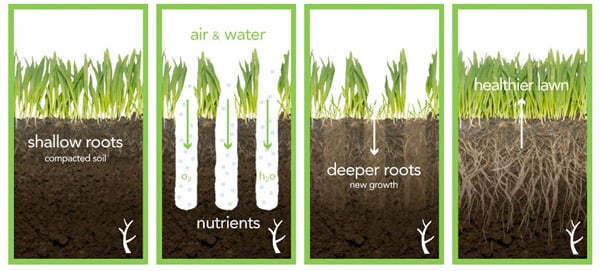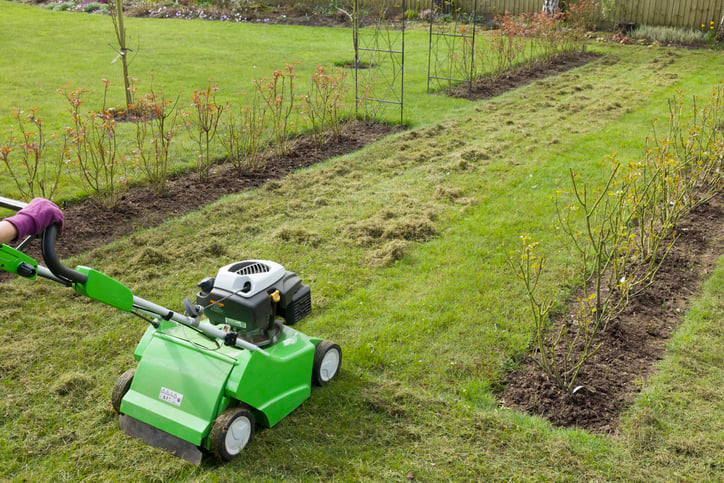Dethatching your lawn allows air, water, and nutrients to reach the soil, aiding water drainage and promoting healthier grass. However, it can potentially damage the lawn and is labor-intensive.
Maintaining a healthy lawn is essential for a beautiful outdoor space. Dethatching, the process of removing a layer of dead grass and other organic matter, can have significant benefits, but it also presents some drawbacks. Understanding the pros and cons of dethatching your lawn is essential before deciding whether it’s the right step for your lawn care routine.
On one hand, dethatching helps improve air and water circulation and allows nutrients to penetrate the soil. This can lead to better water drainage and healthier grass growth. However, the process is labor-intensive, and if not done correctly, it can potentially damage the lawn. By examining both the advantages and potential drawbacks of dethatching, you can make an informed decision about the best approach to maintain a lush and thriving lawn.
Pros Of Dethatching Lawn
Detaching removes the thick layer of dead plant material, allowing air, water, and nutrients to reach your plants and soil. Dethatching also helps your lawn to drain better, promoting healthier grass growth while improving nutrient absorption.
Cons Of Dethatching Lawn
The process of dethatching a lawn can have some drawbacks that you should consider before embarking on it.
Possibility Of Damaging Lawn
One of the potential downsides of dethatching your lawn is the risk of causing damage to the turf. Aggressive dethatching can lead to the uprooting of healthy grass along with the thatch, causing bare spots and patches in the lawn. In some cases, the dethatching equipment might cut into the soil, weakening the root system and causing stress to the grass.
Removal Of Beneficial Layer
Dethatching, while removing the layer of built-up thatch, can also strip away the beneficial organisms and microorganisms that reside within it. These organisms aid in the decomposition of organic matter, improve soil structure, and help to suppress harmful pathogens. Additionally, the layer of thatch can serve as a natural insulator, protecting the roots from temperature extremes and excessive moisture loss. By stripping away this layer, you may inadvertently compromise the health and resilience of your lawn.
When To Dethatch Your Lawn
Dethatching your lawn can have both pros and cons. On the positive side, dethatching removes dead plant material, allowing air, water, and nutrients to reach your plants and soil. However, excessive thatch can harbor pests, diseases, and trap roots, subjecting them to drought and extreme temperatures.
It’s important to consider the condition of your lawn and the potential drawbacks before deciding to dethatch.
When to Dethatch Your Lawn Excessive Thatch Buildup Excessive thatch can hinder the health of your lawn by preventing vital resources such as water, air, and fertilizers from reaching the soil and plant roots. It occurs when the production of thatch is high and its breakdown is slow, leading to a thick layer of organic matter. When you notice excessive thatch buildup, it’s crucial to consider dethatching your lawn. Low Soil pH or Compacted Soil Low soil pH or compacted soil can contribute to thatch buildup, as they hinder the decomposition of organic matter. Additionally, these conditions may limit the penetration of water, air, and nutrients, further exacerbating the thatch problem. If you identify low soil pH or compacted soil in your lawn, dethatching may be necessary to alleviate these issues. By recognizing the signs of excessive thatch buildup and understanding the impact of low soil pH or compacted soil, you can determine the optimal time to dethatch your lawn, ensuring its overall health and vitality.
Credit: blog.lushlawn.com
Aerate Or Dethatch: Which Is Better?
Aerate or Dethatch: Which is Better?
Benefits Of Aerating
- Aerating breaks up compacted soil and allows oxygen, water, and nutrients to reach grassroots.
- Improves soil drainage and promotes healthier, more resilient grass.
- Encourages deeper root growth and enhances overall lawn health.
Possible Damage From Dethatching
- Dethatching can potentially damage the grassroots if done too aggressively or frequently.
- May leave the lawn vulnerable to weeds, pests, and diseases due to the removal of protective thatch layer.
- Excessive dethatching can lead to soil erosion and compaction issues.
How To Dethatch Your Lawn
Do you really need to dethatch your lawn? Detaching removes the thick layer of dead plant material (thatch). This allows air, water, and nutrients to reach your plants and soil again. Dethatching allows your lawn to drain better as well. By learning why dethatching is important, as well as when and how to dethatch, it will be easier to keep your lawn healthy.
Tools And Equipment Needed
Before you start dethatching your lawn, make sure you have the necessary tools and equipment. Here’s what you’ll need:
- A dethatching rake or a power dethatcher machine
- A lawn mower to cut your grass to a shorter length
- Gloves to protect your hands
- Goggles to protect your eyes
- A garden hose or sprinkler to water your lawn after dethatching
Step-by-step Process
Now that you have the tools and equipment ready, here’s a step-by-step process to dethatch your lawn:
- Mow your lawn to a height of about 1.5 inches.
- Set the dethatching rake or power dethatcher machine to the appropriate height for your lawn.
- Start going over your lawn, making sure to cover the entire area. If you’re using a dethatching rake, use a push and pull motion to remove the thatch. If you’re using a power dethatcher machine, follow the manufacturer’s instructions.
- Collect the thatch as you go along, either by raking it up or by using a bag attachment on your power dethatcher machine.
- Water your lawn after dethatching to help it recover.
- Dispose of the collected thatch properly.
Remember, dethatching is a vigorous process, so take breaks if needed and stay hydrated.
By following these steps, you can effectively dethatch your lawn and promote better growth and health for your grass.

Credit: blog.lushlawn.com

Credit: sustainability-success.com
Frequently Asked Questions For Pros And Cons Of Dethatching Lawn
Do You Really Need To Dethatch Your Lawn?
Dethatching removes dead thatch to promote airflow, water absorption, and nutrient access for healthier, better-draining lawns.
How Long Does It Take For A Lawn To Recover After Dethatching?
Dethatching a lawn usually takes 2-4 weeks for recovery. However, this can vary based on factors such as grass type and weather conditions.
How Do I Know If My Yard Needs Dethatching?
If your yard has a thick layer of dead plant material, it needs dethatching. This process allows air, water, and nutrients to reach the soil and plants, improving drainage and overall health. Checking for excessive thatch is a good indicator of when dethatching is necessary.
Conclusion
Dethatching your lawn can improve water, air, and nutrient circulation, promoting overall lawn health. However, excessive dethatching can damage your lawn in the process. Consider the pros and cons carefully before deciding to dethatch your lawn for optimal results. Remember to prioritize your lawn’s well-being.